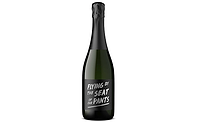![]()
In the Driver’s Seat: Test-driving the Peterbilt 335
Model 335 Truck with van body
Year: 2004
Wheelbase: 220 inches
Overall Length: 288 inches
Body: 24-foot dry van with Waltco fold-out liftgate
Engine: Cummins ISC260 - 260 hp @ 2,000 rpm; exhaust brake; cruise control
Transmission: Allison MD3060P 6-speed automatic
Front Axle: Dana Spicer E1202I, 12,000-pound gawr; taper leaf springs
Rear Axle: Dana Spicer 21090S, 21,000-pound gawr; 5.29 ratio; Peterbilt Low
Air Leaf suspension
GVWR: 33,000 pounds
Steering: Power
Tires: 14 ply 295/75R22.5
Fuel Tank: 23-inch aluminum, 70-gallon, right-hand side
Model 335 Tractor, Single AxleYear: 2004Wheelbase: 150 inches
Engine: Cummins ISC300 - 300 hp @ 2,200 rpm
Transmission: Fuller FR011210B 10-speed manual
Clutch: Easton Fuller 14-inch medium duty Solo
Front Axle: Dana Spicer E1202I, 12,000-pound gawr; taper leaf springs
Rear Axle: Dana Spicer 21090S, 21,000-pound gawr; 3.90 ratio; Peterbilt Low
Air Trac suspension
GCWR: 50,000 pounds
Steering: Power
Tires: 14 ply 295/75R22.5
Fuel Tank: 23-inch aluminum, 70-gallon, right-hand side


